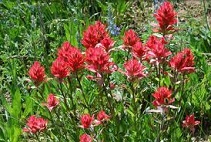 ATLANTA—Ensuring sustainability of ecosystems through protection of plants, soil and water and increased habitat for native birds and insects is the goal of proposed requirements to the green building standard from ASHRAE, the U.S. Green Building Council (USGBC) and the Illuminating Engineering Society (IES).
ATLANTA—Ensuring sustainability of ecosystems through protection of plants, soil and water and increased habitat for native birds and insects is the goal of proposed requirements to the green building standard from ASHRAE, the U.S. Green Building Council (USGBC) and the Illuminating Engineering Society (IES).
“The intent of the proposal is to maintain or restore a minimum level of biodiversity including bio-diverse plantings, native plants and limited turfgrass,” Anthony Floyd, a member of the Standard 189.1 committee, said. “Supporting and maintaining the biodiversity is critical to the long term health and sustainability of ecosystems of which humans and all life depend on for existence. Sustainable development recognizes and attempts to account for the interdependencies of ecosystems in the human built environment. Hence, Standard 189.1 addresses biodiversity at the building site level in recognition of these interdependencies.”
ANSI/ASHRAE/USGBC/IES Standard 189.1-2011, Standard for the Design of High-Performance, Green Buildings Except Low-Rise Residential Buildings, covers key topical areas of site sustainability, water-use efficiency, energy ef¬ficiency, indoor environmental quality and the building’s impact on the atmosphere, materials and resources.
Native Plant Definition Revised
Proposed addendum bg revises the Native Plant definition, clarifies the Plants section by renaming it Landscape Design, and requires a minimum area of the landscape to be native plants. Addendum bg is a cleanup to the existing section, according to Floyd.
Addendum bg is open for public comment, along with four other addenda, until March 9, 2014. To comment or learn more, visit www.ashrae.org/publicreviews.
“Native plants provide habitat (food and protection) for animals (pollinating insects, birds, mammals, etc.) that non-native plants have not evolved to provide,” Susan Gitlin, also a member of the Standard 189.1 committee, said. “The benefits that native plants provide are irreplaceable and essential in our ecological systems. The vast majority of human-built landscapes use lawns and other plants that have been sourced and cultivated in such a way that they have minimal benefits for any wildlife, e.g., the leaves are not those that caterpillars have evolved to eat, and without the caterpillars, birds are not provided with that essential protein source.”





